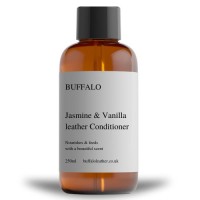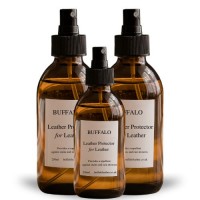News
CANADA GOOSE LEATHER JACKET RESTORED

We're not going to beat around the bush, this jacket was so time consuming to restore because of the contrasting colours either side of it.
Luckily we have a steady hand and using our leather repair pens ensured a neat straight line too!
This wide stripe ran over the whole front, sides and back, we charged £150, but you can do this process yourself by purchasing our products.
The Process
- Firstly we cleaned the leather using our Ink & Stain Remover Kit
- Then we applied our white leather paint using our application sponges
- We finished the edges using our leather repair pen
- We sealed the leather using our water based sealant and application sponge
Ink & Stain Remover Kit
White Leather Paint
White Leather Repair Pen
Water Based Leather Sealant
Pack Applicator Sponges
HOW TO REMOVE UNWANTED ODOURS FROM HANDBAGS
It's an age old problem, something in your handbag has left a nasty niff, a pet has had an accident, its been in storage and has a musty smell, or maybe someone has blown tobacco smoke on your cherished item.
If your bag is leather with a fabric lining how do you find a product which is safe to treat both, or how do you actually remove the problem without resorting to a washing machine?
Fear not, here at Buffalo Products we have the solution, our odour remover doesn't just mask the smell it actually zaps odours by eliminating them and leaving a pleasant smell behind.
Its very easy to apply, just mist the odour refresher and let it do its job.
Want to purchase one? No problem, just click on our product link below and you're on your journey to a fresh smelling handbag!
CAN A LEATHER JACKET BE DRY CLEANED?
Is it advisable to have it dry cleaned?
No! Dry Cleaners are not experts in leather, we often see leather jackets which have been subjected to dry cleaning chemicals which result in stained and hardened leather, we can sometimes deal with the stains but once the leather has hardened it very difficult to reverse as it removes natural oils.
You can have a leather jacket cleaned by a leather professional!
Leather is a natural material that requires specialist care by a professional leather cleaning expert (such as ourselves here at Buffalo) who can restore its appearance and colour.
A professional will use the correct cleaning method for the type of leather you have, and will apply the correct dye or pigment colour so it doesn’t alter the original appearance, whilst also applying softeners to retain its suppleness.
And please remember do not use the following to clean your leather:
- Microfibre cloths – These shed tiny fibres which can mix in to a leather conditioner, the fibres harden when the leather conditioner dries causing a rough surface.
- White vinegar – This is highly acidic and can harm your leather, its also very pungent and the leather will hold that smell.
- Oil – Garment leather and upholstery leather is not created to take oil, oil will produce a sticky dull surface.
- Saddle soap – As the name indicates this is purely created for saddles which is entirely different leather compared to garment leather.





